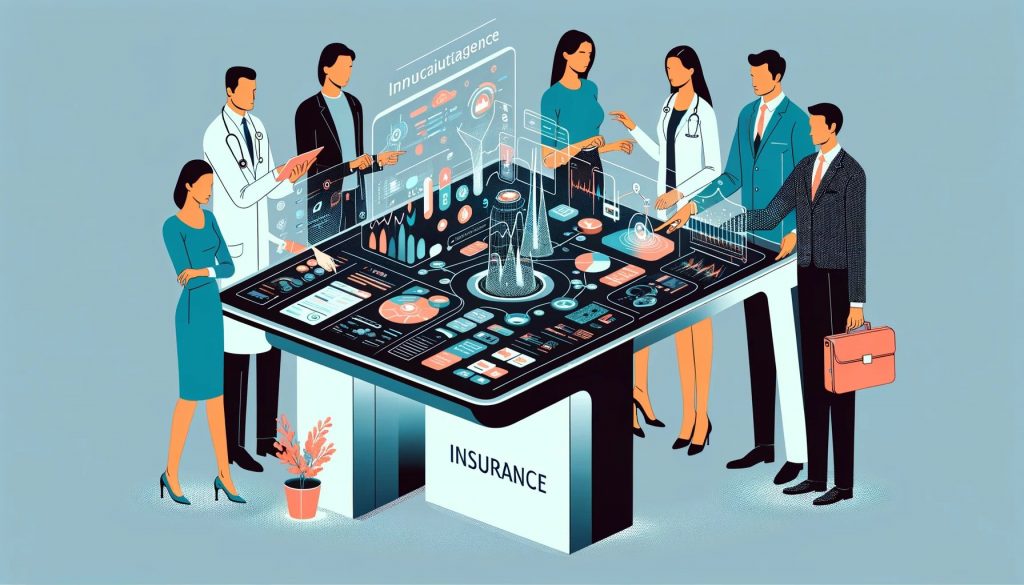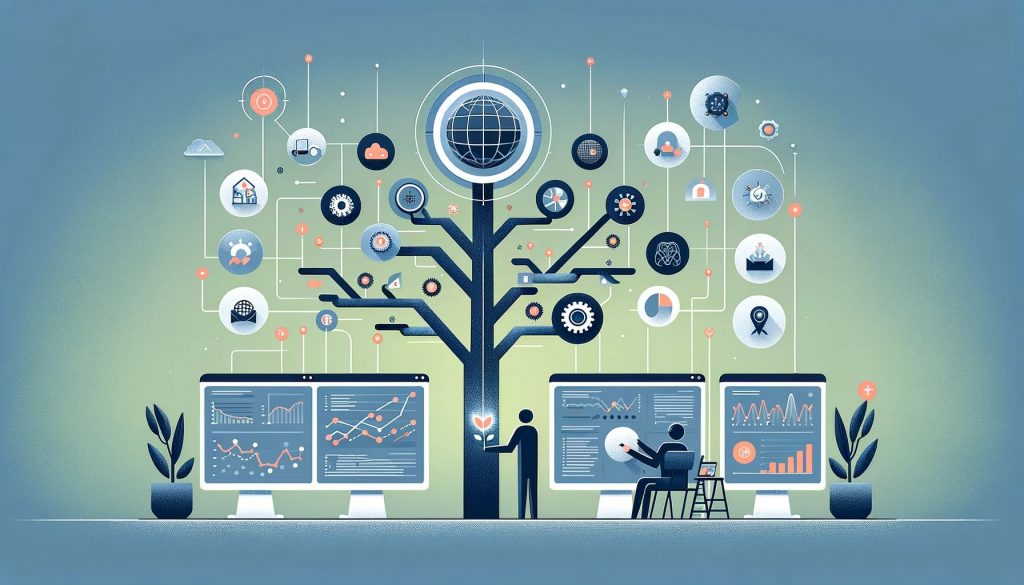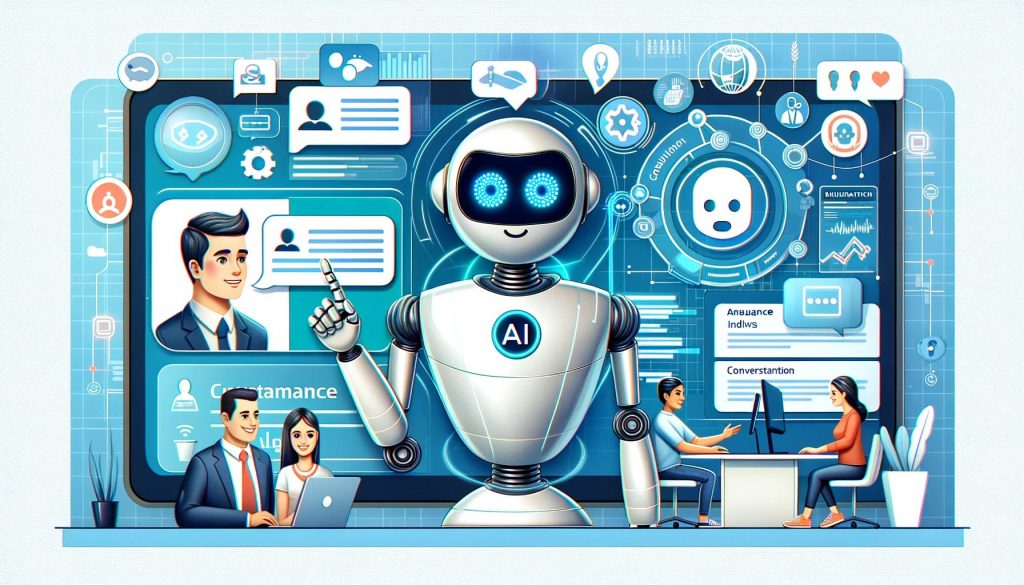What if the devastating Hurricane Katrina or Cyclone Nargis had been anticipated with greater precision, its impact mitigated by proactive insurance protocols?
How would the landscape of life and health insurance change if underwriters could accurately simulate and understand the long-term health trends of populations?
And what if reinsurers could preemptively navigate market collapses or political turmoil by modeling their impacts on portfolios?
These aren’t mere speculations but pivotal questions that drive today’s insurance innovations.

Repeatedly, in the aftermath of Katrina and several other furious acts of nature, humanity has learned the hard price of being unprepared.
And now, as the page turns, generative AI stands at the forefront of an insurance revolution, offering not only answers but solutions. It equips the industry to envision and prepare for a spectrum of futures, reshaping policies and protection plans to be as dynamic and complex as the world they insure.
As we pivot to a discussion of generative AI’s current and future applications, we’ll uncover how its predictive capabilities are already changing the face of insurance, turning yesterday’s ‘what-ifs’ into today’s actionable foresights.
Customizing Insurance Products with Generative AI

The insurance product, once a fixed proposition offered with a take-it-or-leave-it air, is now as malleable as clay in the hands of insurers wielding generative AI.
The Magic of Machine Learning in Policy Design: Machine learning (ML) isn’t just about digesting vast data; it’s about discerning patterns that the human eye may overlook. In the realm of insurance, ML algorithms chew through decades of historical data, customer interactions, claim histories, and even social media footprints.
Neural networks, decision trees, and ensemble methods are part of the actuary’s modern toolkit, transforming raw data into predictive insights that shape personalized policy offerings.
Dynamic Pricing through Genetic Algorithms: Price is a dance between what the customer is willing to pay and what the insurer needs to cover potential risks. Genetic algorithms, a subset of evolutionary algorithms inspired by natural selection, consider an individual’s lifestyle, location, and even the car they drive to evolve insurance pricing models that adapt in real-time.
These algorithms simulate multiple generations of pricing strategies to find the optimal balance between attractiveness to customers and profitability for insurers. The result? Dynamic pricing that fits like a glove, attracting and retaining customers while safeguarding the insurer’s bottom line.

Expert Systems in Personalization: An expert system, in insurance terms, is like a seasoned underwriter with an encyclopedic knowledge of risk—only it doesn’t take coffee breaks. When paired with generative AI, these systems become even more potent, personalizing policies by applying rules derived from vast datasets.
By incorporating variables ranging from personal health records to driving habits, expert systems ensure that every policy is as unique as the individual it covers. For instance, a health-conscious individual with a penchant for marathon running and a safe driving record might receive a lower premium, thanks to the expert system’s ability to parse through their health metrics and driving data.
Case Studies: Consider the case of Lemonade Inc., a company that disrupted the insurance market with AI-powered services. Lemonade’s business model uses chatbots to collect data from users, which feeds into their AI algorithms to craft personalized insurance products.
Another example is John Hancock’s use of wearable technology data to adjust life insurance premiums. The more steps clients take, literally, the more savings they can earn on their policies. These are not isolated trends but harbingers of a future where insurance products are as dynamic as the risks they mitigate and the lives of those they protect.
Customizing insurance products through generative AI is not just about cutting-edge technology; it’s about realigning the industry to a customer-centric model that values individuality and incentivizes risk reduction.
Enhancing Claims Management with Generative AI

Claims management, the poster child for insurance drudgery, is getting a Silicon Valley-style makeover.
Transforming Claims with AI: At the heart of this transformation is a digital alchemist known as machine learning, turning the leaden process of claim filing into gold. Picture this: an AI system that digests the aftermath of a car accident through pictures, deftly distinguishing between a minor ding and a major crunch. Convolutional neural networks (CNNs) are the secret sauce here, using image recognition to assess damage with an eye that never sleeps—unless it’s learning to become sharper in its digital dreams.
Pattern Recognition: But what about the tricksters, the claimants who cry wolf? Generative AI models serve as the ultimate polygraph test for fraudulent claims. By learning the normal ebb and flow of claim patterns, these systems can flag anomalies with the finesse of a detective concluding, “This doesn’t add up.”
Anomaly detection algorithms feast on data—normal transactions are their bread and butter, and outliers are the crumbs they seek.
Predictive Models: Consider the predictive model as the crystal ball of the insurance world. It doesn’t just predict if a claim will happen; it sees when, where, and how severe it may be. Utilizing time-series forecasting, generative AI can preemptively allocate resources, ensuring that a sudden flood (literal or figurative) of claims doesn’t catch anyone off guard.
The endgame is not to replace human adjusters but to arm them with Iron Man suits of data. When AI handles the grunt work of data collection and initial analysis, humans step in for the nuanced decisions, equipped with AI-collated evidence. This tag team can process claims at a pace that would make the fastest paper-pusher balk, slashing decision times from days to hours—or even minutes.
Real-World AI Claims Handling: In Japan, Fukoku Mutual Life Insurance made headlines by adopting an IBM Watson-based system to process insurance claims, a move estimated to increase productivity by 30%. Meanwhile, Zurich Insurance is employing AI to evaluate medical reports.
As generative AI in insurance continues to evolve, the claims process may soon be as painless as online shopping, with the added bonus of reducing overhead costs and enhancing customer satisfaction.
AI-Powered Risk Assessment and Management

Risk prediction is no longer just about looking in the rearview mirror; it’s about peering through a telescope into the future. This is where generative AI plays fortune teller, using predictive analytics to chart out possible risk trajectories.
These are dynamic models that learn and evolve. They digest everything from weather patterns affecting crop insurance to social media trends that could signal a market shift affecting commercial liability. With generative AI, risk assessment is like a live organism, constantly adapting to environmental changes.
Simulating Disasters Before They Strike: Imagine if we could rehearse for disasters the way we run fire drills. Generative AI allows insurers to do just that—simulate catastrophes and their cascading effects on a portfolio. By using Monte Carlo simulations or agent-based modeling, insurers can play out thousands of ‘what-if’ scenarios, from earthquakes to economic downturns. It’s the insurance equivalent of a chess master playing out all possible games in their mind, ready for any move the opponent might make.
Underwriting: The Art and Science: Underwriting is where the art of human judgment meets the science of statistical probabilities. It’s not about replacing the underwriter but giving them a Google Maps for navigating the complex terrain of human behavior, economics, and mother nature’s whims. With generative AI models, underwriters can craft policies that are as precise as a laser-cut diamond, reflecting the multifaceted aspects of risk they cover.

Strategic Risk Mitigation: If risk assessment is about understanding the game, risk mitigation is about playing to win. By generating and testing different risk mitigation strategies, from adjusting policy terms to diversifying investments, AI helps insurers stay several moves ahead.
For instance, Allianz SE uses AI to speed up vehicle damage assessments—a process that once took days now takes minutes. And Swiss Re capitalizes on AI for sophisticated risk modeling, transforming abstract data into concrete decision-making frameworks. This is real, actionable intelligence—not just numbers on a page.
Pension Risk Transfer (PRT): This is a strategy where a business with a pension plan hands over the responsibility of paying out pensions to an insurance company. The main goal is to reduce the uncertainty of funding retirees’ pensions in the future. It’s like passing on the baton in a relay race; once the company passes the baton (pension responsibilities) to the insurance company, it’s up to them to finish the race (manage and pay the pensions).
Generative AI models make this process a lot easier for the insurance company. They use past data to predict what might be needed for future pension payouts. It’s about making educated guesses based on trends and patterns. It looks at how long people are living and what the world’s financial health might look like down the road. When combined with the automation and regulatory compliance capabilities of modern generative AI solutions for PRT, it is safe to say that the future of retirement planning is being reshaped before our eyes.
Customer Service and Experience in Insurance

We are in the age of AI chatbots: the digital baristas of the insurance world, serving up a blend of expertise and personality. These chatbots are masters of conversation, powered by natural language processing (NLP) algorithms that understand the nuance and emotion behind customer inquiries. With each interaction, they learn a little more about how to handle the complex flavors of human communication, ensuring each customer feels heard, understood, and, above all, cared for.
By analyzing past interactions, purchase patterns, and even social signals, AI molds the customer experience into a bespoke suit, tailored to individual expectations and preferences.
But can AI really empathize? While it may not shed tears, generative AI can be designed to recognize stress signals in customer voices or distress flags in written communication, triggering responses that soothe frayed nerves and offer solutions. This is empathy at scale.
To see this in action, look no further than State Farm’s collaboration with AI to provide customer service via their virtual assistant. Meanwhile, Progressive Insurance’s “Flo” has evolved from a quirky advertising persona to an AI-powered guide helping customers navigate insurance decisions.
Marketing and Sales Optimization

Marketing and sales in insurance used to be a handshake and a stack of brochures. But with generative AI, it’s now a dynamic, data-driven dialogue, continually tailored to the tune of individual preferences and market pulses.
AI as the New Age Lead Generator: Lead generation is no longer about casting a wide net and hoping for the best. It’s about crafting the right bait for the right fish. Generative AI churns through data, spotting patterns and propensities that inform who might be ready for a policy upgrade or a new customer ripe for outreach. Instead of cold calling, think of it as “warm welcoming.”
The Personalization Puzzle: Personalization in sales isn’t just nice—it’s necessary. With generative AI, every customer interaction becomes a piece of the puzzle, with AI deftly placing each piece until the full picture of a customer’s needs and desires is revealed. From personalized emails that address a client’s specific risk concerns to custom-crafted insurance bundles, AI ensures the offer is always relevant and timely.
Sales Strategies: By analyzing market trends and consumer behavior, AI helps sales teams to not just understand their performance but to forecast it. This isn’t just about following leads; it’s about foreseeing where the next opportunity will emerge, be it a new homeowner wave or a fleet of electric vehicles needing coverage.
Consider Prudential’s use of AI to crunch complex data and identify customer segments that are more likely to purchase specific products. Or Zurich Insurance, which uses AI to tailor customer interactions, boosting sales by delivering the right message at the right time.
The infusion of generative AI into insurance marketing and sales is about understanding the ‘why’ behind the ‘buy’ and ensuring that every marketing dollar spent is less of a spend and more of an investment.
Operational Efficiency and Strategic Planning

Think of operational tasks as a stack of dominos. Generative AI models allow insurers to not just flick the first one; it lines them up so perfectly that the end-to-end process flows seamlessly. From automating mundane tasks like document processing to optimizing claims routing, these models are the invisible but invaluable workforce, tackling workloads that would otherwise swamp human teams.
It’s not about predicting the opponent’s next move—it’s about crafting a game plan that positions the insurance firm five steps ahead. AI sifts through mountains of market data, consumer behavior analytics, and emerging trend reports to arm decision-makers with actionable insights.
Mastering Resource Allocation with Predictive Analytics: Where to deploy your agents? Which policies to prioritize? AI-powered predictive models provide the answers, ensuring resources are allocated not just efficiently but effectively. It’s the difference between using a map and a GPS—one tells you the layout; the other guides you turn by turn to your destination.
In the strategy room, AI transforms data into a storyboard of what-if scenarios, playing out future market conditions and internal business impacts. Generative AI models forecast various strategic outcomes, from investment decisions to product development, giving insurers the confidence to make bold moves backed by data.
Insurers like Liberty Mutual are leveraging AI to enhance underwriting efficiency and accuracy. They’re not just speeding up the process; they’re elevating the quality of their underwriting decisions. It’s a win-win for speed and precision.
Compliance and Regulatory Adaptation

In an industry that’s as tightly regulated as insurance, staying compliant isn’t a mere legal obligation; it’s the bedrock of trust and integrity.
With new regulations popping up like a game of whack-a-mole, generative AI is the mallet insurance companies need. It can comb through vast sets of compliance requirements, flag potential issues, and update systems in near-real-time. For instance, AI models can be used to monitor transactions and communication for signs of non-compliance, saving firms from hefty fines and reputational damage.
Risk Modeling and Regulatory Reporting: Risk modeling isn’t just for underwriting; it’s crucial for regulatory reporting. AI models assist in this by providing accurate and detailed risk assessments that satisfy regulatory scrutiny. It ensures that reports are more than just numbers—they tell a story that regulators want to hear, one of due diligence and foresight.
Keeping Pace with the Compliance Calendar: Regulatory bodies are not known for their patience, and generative models help insurers keep pace with their demanding timelines. They automate the creation and submission of reports, making sure that every ‘t’ is crossed and every ‘i’ is dotted well before the deadline. With AI, the compliance calendar is less of a countdown to chaos and more of a schedule of structured success.
Data Privacy and Protection: In the age of data breaches, protecting customer information is as critical as safeguarding their assets. Generative AI tools in conjunction with architectures like Blockchain not only secure data but also ensure privacy practices are up to code. They can detect and deter threats, sometimes even before they emerge, and react to new privacy laws by adjusting protocols across global operations.
To give you a sense of the scale, consider GDPR, which can impose fines up to 4% of annual global turnover for non-compliance.
Examples of AI-driven compliance are already in full swing, with firms like Lemonade setting the pace. Lemonade uses AI to handle regulatory data, making processes transparent and agile. Meanwhile, MetLife employs AI for its ethics and compliance learning program, ensuring their team stays informed and ahead of the curve.
Conclusion
As generative AI reshapes insurance, we’re tasked not just with adopting new tools but with steering their trajectory responsibly. This technology offers us a canvas to reduce risk and craft a safety net for the unforeseen, painting a future where insurance supports more than just financial recovery—it underpins societal resilience.
Yet, as we innovate, we must anchor our actions in ethics. It’s crucial to balance what AI can do with what it should do, ensuring our advancements promote fairness and transparency. The true measure of our progress will be the trust we maintain in the insurance industry as we navigate these new waters.
To industry peers and observers alike: your insights and scrutiny are invaluable. Let’s boldly question, innovate, and shape an industry that mirrors our collective ethos and foresight. The future of insurance is ours to write—let’s ensure it’s a narrative of integrity and purpose.



